Today we’ll talk about some of the categories of Italian wines and cheeses, that are recognizable by the labels. Have you ever noticed abbreviations such as IGP or DOCG on Italian products? If you don’t know what they mean, read on: it may prove useful when choosing your next delicacy.
Never judge a book by the cover. Yet
Italy has such a variety of culinary products and regional traditions that even Italians have a hard time navigating them all, and it happens that sometimes the “cover” can help in choosing what to try. Food labelling in Italy is heavily regulated, because we (Italians) take our food extremely seriously.
So seriously, in fact, that the rules on food labelling in Italy are stricter than the European ones – themselves usually regarded among the most severe in the world. If you are a practical person, who would like to go straight to the point, click here. Read on if you’d like to know the history of the labelling and what’s behind it. When in a foreign country, we love to spend some time around markets and in supermarkets: they tell so much about the local culture, and especially about the culinary habits. Just enter an Italian supermarket and explore the endless shapes, types and brands in the pasta section, and you’ll know what we are talking about.
Not to mention the wine shelves. When picking up a bottle of Italian wine – or a Pecorino cheese, for that matter – you’re likely to see an abbreviation like DOP, DOCG or IGP somewhere on the label. What exactly do these letters stand for and what do they mean? The short answer is:
they show the products’ level of uniqueness and of quality.
To make things more challenging – but also more interesting – even in the same product category, there may be different types of abbreviations on the label. For example, you may find a Prosecco labelled as IGP, DOC or DOCG (but always one at the time).
The history of “guaranteed” labels 
In fact, starting in the late 1960s, a number of rules were gradually put in place by Italian lawmakers together with local committees of producers, to safeguard the quality and authenticity of Italian wines.
A number of reasons were behind this. Among them, there is competition: the arrival of new – often cheaper but not necessarily bad –
foreign wines on the Italian market, such as the Argentinian or the Californian ones.
Another reason was the increasing
request from consumers of quality products: finally putting the horrors of WWII behind, Italians were living an incredible economic growth and were spending an important portion of their income in good food and good wine. A further reason was the need to
protect traditional names, such as Chianti, from its use out of context and for products that had nothing to do with the original ones.
Consequently, official labels were created, and laws were put in place: the rules started protecting areas and required that growers and producers adhere to a set of regulations in order to be certified and therefore to be allowed to use the certified labels on their products. Traditional areas, such as the Barolo region, were circumscribed and given the exclusive right to commercialize the wine that brought their name.
Beside delimiting the production area, the regulations determined a number of important aspects such as the permitted grape varieties, their proportions, the maturation techniques, the expected content of alcohol and sugar, the kind of vinification and more. This approach soon extended to other products, such as cheese. With time, the types of protections and regulations multiplied, and today they also involve aspects such as the ageing process (the types of cellars, the ageing time, the wood employed to build the barrels…); the origin and characteristics of the raw material used, and much more.
The types of labels Today
Italian certification labels fall into seven categories of increasing strictness: IG, STG, IGT, IGP, DOP, DOC, DOCG. Of course, there tends to be a correspondence between the label and the price.
Yet, don’t assume that a wine with a higher labelling is necessarily better than one produced following less strict rules, nor that it is always more expensive.
The seven different abbreviations are:
IG - Indicazione Geografica This is the least strict of the labels. It shows that a product is related to a designated geographical area.
IGT - Indicazione Geografica Tipica 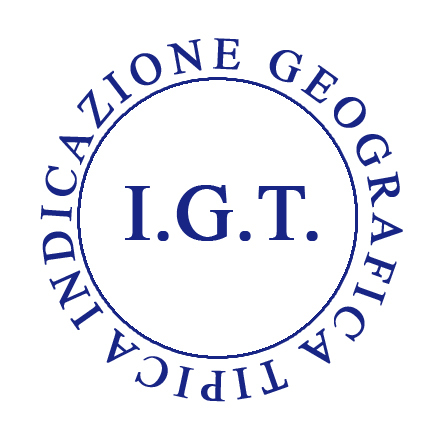
It can be loosely translated as “product that is typical of a geographical area”. If you see this label you are buying a wine that is produced in a defined geographical area and according to a set of rules. There are today 118 kinds of IGT wines in Italy.
IGP - Indicazione Geografica Protetta
![]()
Literally “Protected Geographical Indication”. It represents a step forward from the IGT – or if you prefer, what comes after recognizing a tradition: protecting it. This labelling exists at a European Community level: in the UK and Ireland it is known as PGI. Unlike the IGT, it applies to all kinds of traditional food, not only to wine. The rules are stricter than the IGT ones, and they always imply that an important part of the production process takes place in a specific geographical area, because the idea behind the labelling is that at least one of the fundamental characteristics making the product unique is determined by the place where it comes from.
STG - Specialità Tradizionale Garantita
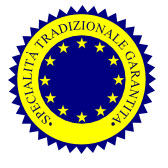
Similar to the IGP, from which it differs in the fact that the label is assigned to a “traditional” product, meaning it has been around for at least 30 years. This may sound laughable in a place like Italy, where tradition often means at least a dozen generations. It makes more sense, though, if we consider that it doesn’t apply to wine nor to the things that have been around forever, but it does apply to raw ingredients (and for instance to newly created breeds) and to products of relatively recent arrival (such as beer or chocolate). Take for instance micro-brewery: it is growing exponentially, and some Italian brewers are creating fantastic beers… why not regulating those too?
DOP - Denominazione d’Origine Protetta
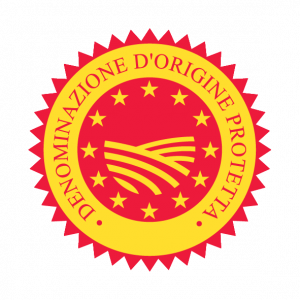
This label is similar to the IGP, and it is also recognized at a European level. In the English speaking part of Europe it is known as PDO (Protected Designation of Origin). Obtaining it is more difficult than getting an IGP. In fact, it implies that the quality and characteristics of the product depends essentially or exclusively from the place where it is made, and therefore almost all of the ingredients must come from, and the production must happen in a designated area. There are 299 products that have the DOP or IGP label in Italy.
DOC - Denominazione di Origine Controllata
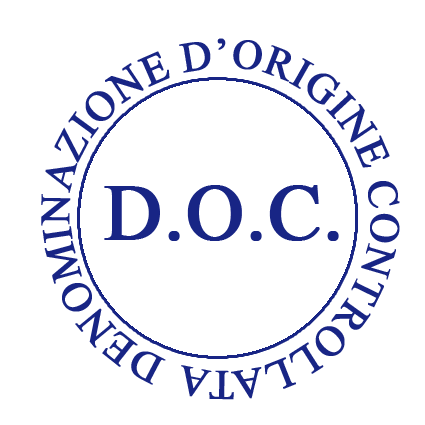
This is the very first labelling introduced. It is only for wines. It can be loosely translated as “you are buying a bottle that has been produced in a specific area according to a strict set of rules”. It dates back to the first law on this matter, passed in the Italian parliament in 1963. The first DOC wines were produced in Tuscany. There are 334 types of DOC wines in Italy today. The DOC label implies that, beside all the rules already mentioned above, a number of other procedures, guidelines and obligations are put in place. They usually change according to the wine produced and to the committee presiding its production, but some are found in all of the DOC wines. For example, the amount of wine produced is set yearly according to the weather and the expected crop. DOC wine bottles are sealed with a numbered governmental seal across the cap or cork to guarantee the product and to prevent manipulation.
DOCG - Denominazione di Origine Controllata e Garantita 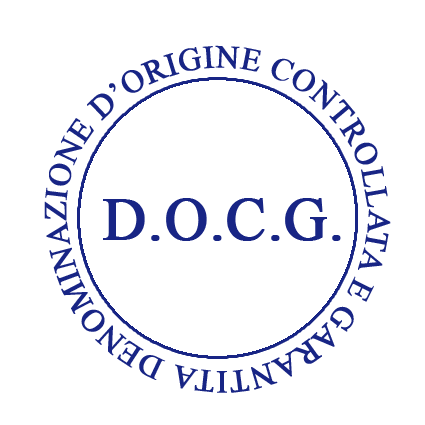
This label imply the strictest set of regulation. There are only 74 kinds of Italian wines that have the committees, the rules and the laws guaranteeing the DOCG status.This abbreviation on the label of your bottle means, for instance, that only the best part of the harvest has been employed; that only grapes with specific characteristics of size and sugar content have been employed; that they are analyzed by government–licensed personnel before being bottled; and that the wine was tasted by a committee at least three times in different moments during the ageing process. We have applied to become members of any of the DOCG the committee, and we are willing to work for free. If we stop writing this blog it means that we’ve been accepted. The DOCG labelling is relatively recent: it was created to rise further the bar from DOC with the government itself guaranteeing the production processes and the quality.
Some examples The list of protected, regulated or recognized products is really really long. It reflects the richness of Italian culinary traditions. Let’s have a quick look to a few examples, to make things a little easier. Among the DOP, for instance, there is our favorite saffron, the so-called
“Gold of Abruzzo”, the Saffron from L’Aquila: according to experts, one of the best saffron in the world – and no need to ask experts to know that it is one of the most expensive ones.
It cannot be labelled a IGP, because it’s been around for too long, because of its high quality, because it’s a raw material, because it comes from an area that is suffering from depopulation and needs to be protected… However, not all the saffron produced in the area is labelled DOP, because to get the designation there are many rules to follow and certifications to obtain. On the other hand, many of the most famous Italian wines, as for instance
Prosecco, Barolo, Chianti, Montepulciano d’Abruzzo, Nero d’Avola, Brunello di Montalcino and so on, often (not always) have more than one possible labelling: the IGP area that is the widest and has the least strict rules (yet still stricter than most guidelines in other parts of the world); the DOP area that is geographically smaller and have stricter production rules; and finally the DOCG, the smallest area and the strictest rules.
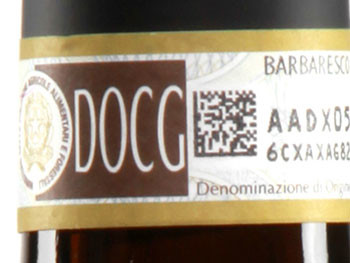
Our take on the matter At Walking Palates we believe that regulations and labelling are important not only because they protect consumer’s demand for quality food but also because they have a great impact protecting places, people and traditions.
Geographical protection is key to preserve products, tastes and production techniques from mass-production and standardization.
And we love the fact that they favor the promotion of products with specific characteristics – any real foodie knows importance – and appreciate the idea of – origin, seasonality, terroir and variety.
These types of regulation have often had a positive impact on less-favored or rural areas.
As
ambassadors of local food we are deeply convinced that food is not only a merchandise but is the result of passion, work, people, ideas and traditions that contribute to that unique and particular food taste, that contribute to defining a community.
Therefore, we welcome laws and rules protecting such a view.






